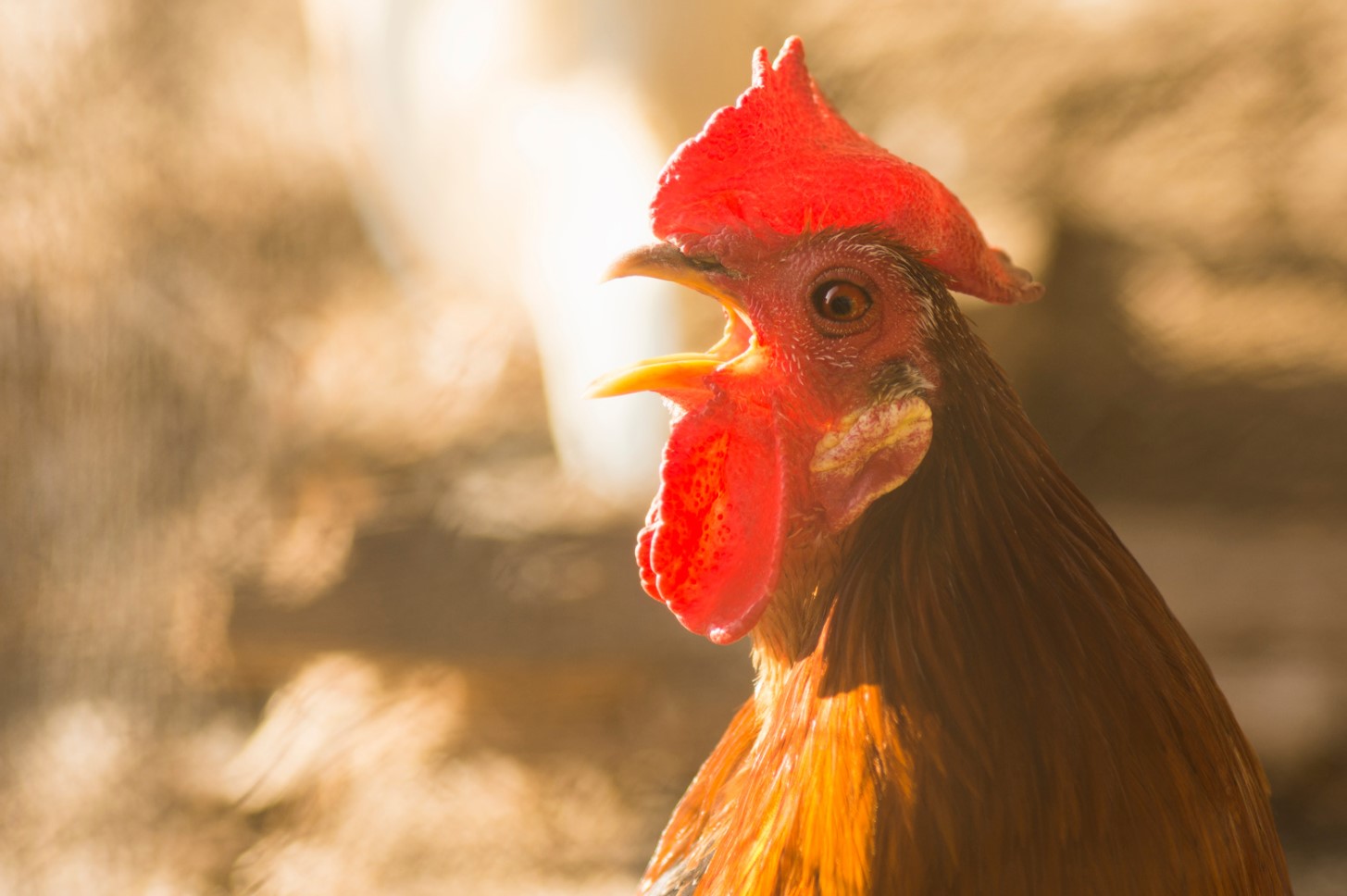What İs A Rooster – Definition And Characteristics
A rooster is a male chicken that is known for its distinctive crowing sound in the morning. It belongs to the genus Gallus of the bird family Phasianidae. Roosters are often raised for their meat and eggs, and they play a significant role in many cultures around the world. Here are some of the defining characteristics of roosters:
- Physical appearance: Roosters are typically larger and more brightly colored than hens. They have a red comb on top of their head, wattles on either side of their beak, and spurs on their legs that they use for fighting.
- Behavior: Roosters are known for their territorial behavior and will protect their hens from predators or other roosters. They also have a habit of crowing loudly early in the morning to signal the start of a new day.
- Reproductive function: Roosters play an important role in the reproduction of chickens, as they fertilize the eggs laid by hens. They will often mate with several hens in one day if given the opportunity.

Overall, roosters are fascinating animals that have served an important role in human history for many thousands of years. Whether you are a farmer, a poultry enthusiast, or simply have an interest in animals, learning about the definition and characteristics of the rooster can be a fascinating journey. So why not take some time to explore this amazing bird?
2. Different Types Of Roosters – Breeds And Features
Roosters are fascinating creatures, and there are different types of them available. Each breed has distinct characteristics that make them unique. In this blog post, we will discuss some of the popular breeds and their features.
Ameraucana Roosters: Ameraucana roosters are known for their unique appearance. They have a beard and muffs on their faces, giving them a distinctive look. These birds are medium-sized and come in different colors, making them a favorite among enthusiasts. They are also popuar because they lay blue eggs.
Buff Orpington Roosters: Buff Orpington roosters have gentle and friendly personalities that make them popular as pets. They are large birds with a docile nature and beautiful buff color. This breed is also known for their egg-laying ability.
- Leghorn Roosters: Leghorn roosters are commonly used in commercial poultry settings because of their excellent egg-laying capability. They have white feathers and are smaller in size than other breeds. They are known for being active birds that enjoy foraging.
- Rhode Island Red Roosters: Rhode Island Red (RIR) roosters are icons of the poultry world. They are a large breed with mahogany color feathers and have a great temperament. RIR’s are used for both their meat and egg-laying ability, making them a popular breed among farmers.
Other popular types of roosters include the Plymouth Rock, Sussex, and Brahma. Each breed has its own characteristics and features that make them great for different purposes. Whether you’re looking for a friendly pet or a bird that lays lots of eggs, there is a rooster breed for you.
3. The History Of Roosters – Domestication And Evolution
Roosters are considered to be one of the oldest known domesticated birds. They have been bred for centuries to produce eggs, for their meat, and to be used in cockfighting. The history of roosters dates back to 5,000 years ago when they were first domesticated in Southeast Asia.
The domestication of roosters is believed to have started when humans started keeping the wild red junglefowl. These birds are native to the Indian subcontinent, but their range extends to parts of Southeast Asia. The red junglefowl has been tamed and domesticated by humans for their meat and eggs as early as 3200 BC in the Indus Valley Civilization.
During the 11th century, roosters were brought to Europe by the Moors, who had their roots in North Africa. Cockfighting, which is a sport where roosters are pitted against each other in a fight to the death, became very popular in Europe during the Middle Ages. In order to breed roosters for cockfighting, the breeders focused on developing roosters with strong and aggressive characteristics. This selective breeding led to the development of many different breeds of roosters that are known today, each with their own distinct set of characteristics and features.
- Roosters were domesticated about 5,000 years ago.
- The red junglefowl is believed to be the ancestor of today’s roosters.
- Cockfighting, a popular sport in Europe during the Middle Ages, led to the development of many different breeds of roosters.
| Period | Event |
|---|---|
| 3200 BC | Roosters were domesticated in the Indus Valley Civilization. |
| 11th century | Roosters were brought to Europe by the Moors. |
| Middle Ages | Cockfighting became popular in Europe, leading to the development of many different breeds of roosters. |
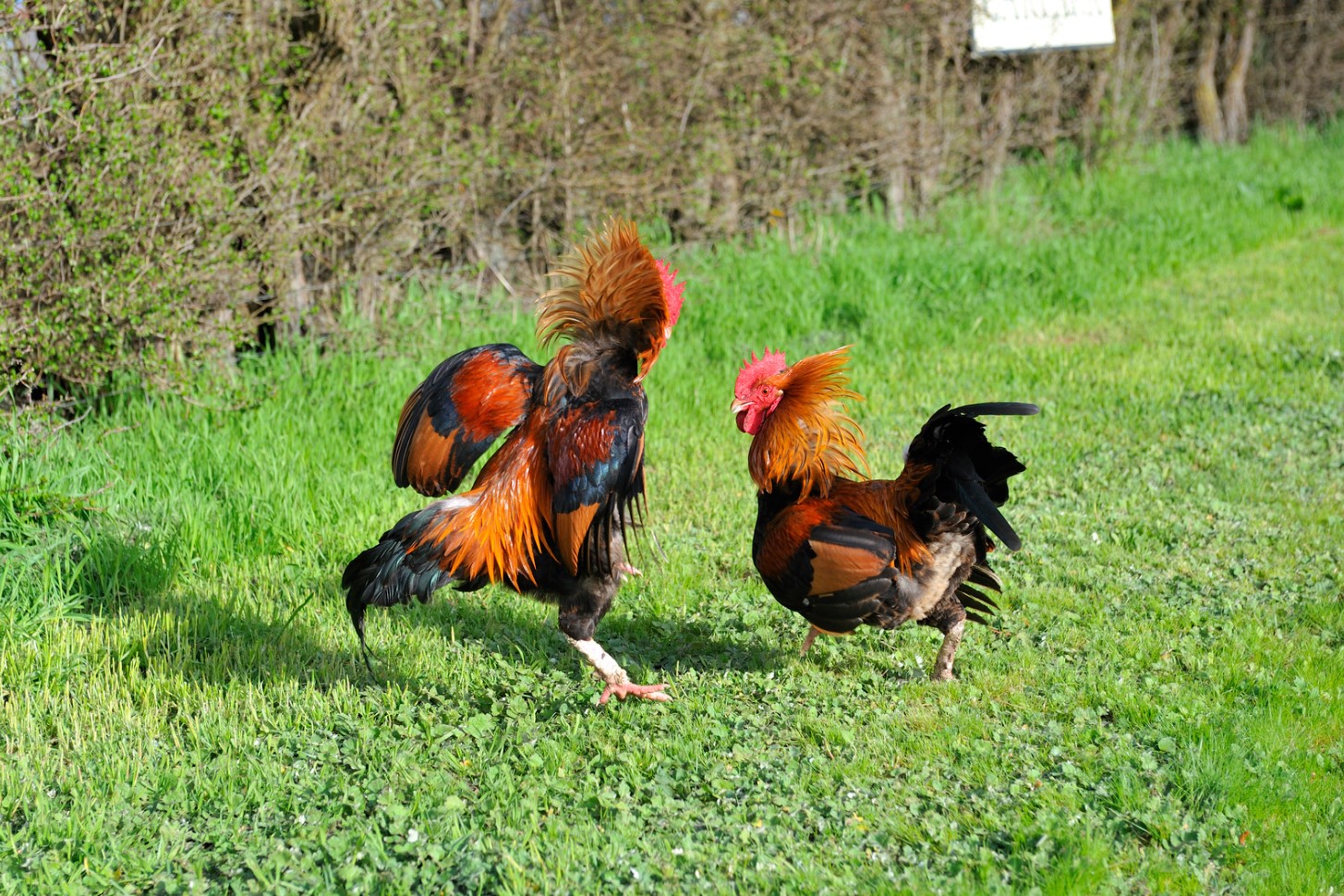
4. The Anatomy Of A Rooster – Body Parts And Functions
Understanding the anatomy of a rooster is essential for any poultry enthusiast, breeder, or farmer. Having an in-depth knowledge of the different body parts and their functions can help in identifying potential health problems, as well as in choosing the right bird for specific purposes.
One of the most distinguishing features of a rooster is its comb. This fleshy protuberance on top of the bird’s head serves to regulate body temperature, with larger combs usually indicating a higher tolerance to heat. Along with the comb, roosters also have wattles, which are the fleshy folds of skin hanging under the beak.
- The beak is another vital part of the rooster’s anatomy, which is responsible for feeding, grooming, and self-defense. It is made up of an upper and lower mandible that are sharp and curved, allowing the bird to peck and scratch at the ground to find food.
- Roosters also have two large wings that help them balance while walking and allows them to take off and fly a short distance. Their strong legs and claws enable them to scratch and dig in the dirt, helping them to forage for food.
One of the most iconic features of the rooster is its tail feathers. The thick, colorful plumage on the rooster’s tail serves to attract hens during mating season. Aside from its aesthetic value, the tail also helps with balancing while standing or walking, and can help the rooster maintain its center of gravity while flapping its wings.
| Body Parts | Functions |
|---|---|
| Comb and wattles | Regulate body temperature and communicate with other birds |
| Beak | Used for feeding, grooming, and self-defense |
| Wings and legs | Helps with balance and foraging for food |
| Tail feathers | Attracts hens during mating season and helps with balance and center of gravity |
Understanding the anatomy of a rooster is crucial in providing proper care and management of these birds. Regular inspection and observation of the different body parts and their functions can help prevent health problems and ensure that the roosters reach their full potential.
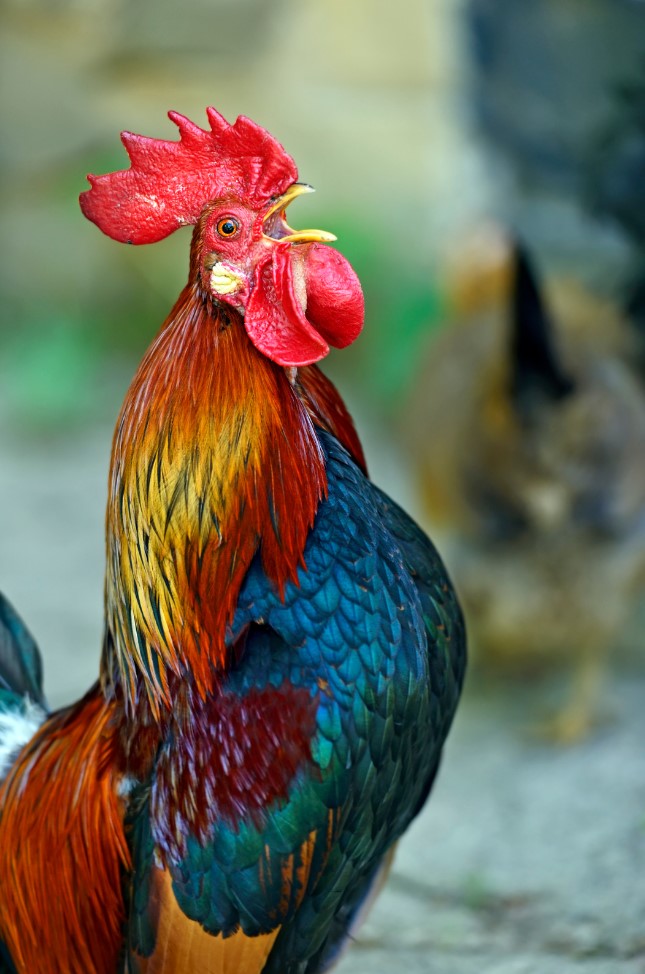
5. Behavioral Patterns Of Roosters – Aggression And Territorialism
Roosters, also known as cockerels, are male chickens known for their distinctive and loud crowing. While they can make great additions to a backyard flock, it is important to understand their behavioral patterns, specifically their aggression and territorialism.
Aggression: Roosters can become aggressive towards humans and other animals. This is especially true during breeding season, when they may feel the need to protect their hens. Signs of aggression include charging, flogging (striking with their wings), and spurs. It is important to handle roosters with caution and to never turn your back on an aggressive bird.
- To reduce aggression in roosters, provide adequate space and resources for your flock. This includes separate nesting boxes for hens, as well as separate areas for feeding and drinking.
- You can also try to establish dominance over your rooster by handling him regularly and standing your ground when he displays aggressive behavior.
Territorialism: Roosters are known for being territorial birds, and they will defend their territory against perceived threats. This can include other roosters, unfamiliar humans, or even household pets. Signs of territorialism include posturing and vocalizing.
| Tips for managing territorial roosters: |
|---|
| Provide enough space for your rooster to establish his territory without encroaching on other birds’ space. |
| Make sure your rooster has a defined role in the flock to help reduce his territorial behavior. |
| If you have multiple roosters, it is important to introduce them slowly and monitor their behavior closely to prevent fighting. |
Understanding and managing the behavioral patterns of roosters is essential for keeping your flock happy and healthy. By providing adequate space and resources, establishing dominance, and introducing roosters carefully, you can reduce aggression and territorialism in your flock.
6. Rooster Care And Management – Housing And Feeding
Roosters are fascinating animals that have been domesticated for centuries, and they require special care and management to thrive. Proper housing and feeding are essential for the health and well-being of your rooster. Here are some tips on how to care for your rooster.
Housing: Roosters need a safe and comfortable place to sleep, eat, and spend their days. A coop is an ideal housing option for roosters as it protects them from predators and the elements. The coop should be large enough to provide ample space for the rooster to move around and stretch its wings. It should also be well-ventilated to prevent respiratory issues. Provide roosts for them to perch on at night, and line the floor with absorbent material such as straw or wood shavings.
- Feeding: A healthy diet is necessary for the optimum growth and development of your rooster. Roosters require a balanced diet that includes protein, carbohydrates, and fat. Commercially available chicken feed is an excellent source of nutrition and should be the mainstay of their diet. Supplement their diet with fresh greens, fruits, and vegetables, as well as calcium in the form of crushed eggshells or oyster shells. Also, make sure that they have a constant supply of clean and fresh water.
Managing Your Rooster: It is crucial to handle your rooster regularly to ensure good behavior and prevent aggressiveness. Spend time with your rooster daily and provide training and socializing to encourage calm behavior. Be cautious when introducing new birds into the flock as it may cause territorial behavior. Regular wellness checks with a veterinarian will help detect and prevent any health issues.
In summary, proper care and management are key to ensuring a healthy and happy rooster. Provide a spacious and safe housing environment, feed them a balanced diet, and provide regular care and attention to keep them healthy and well-behaved. Following these tips will help you raise a thriving and content rooster.
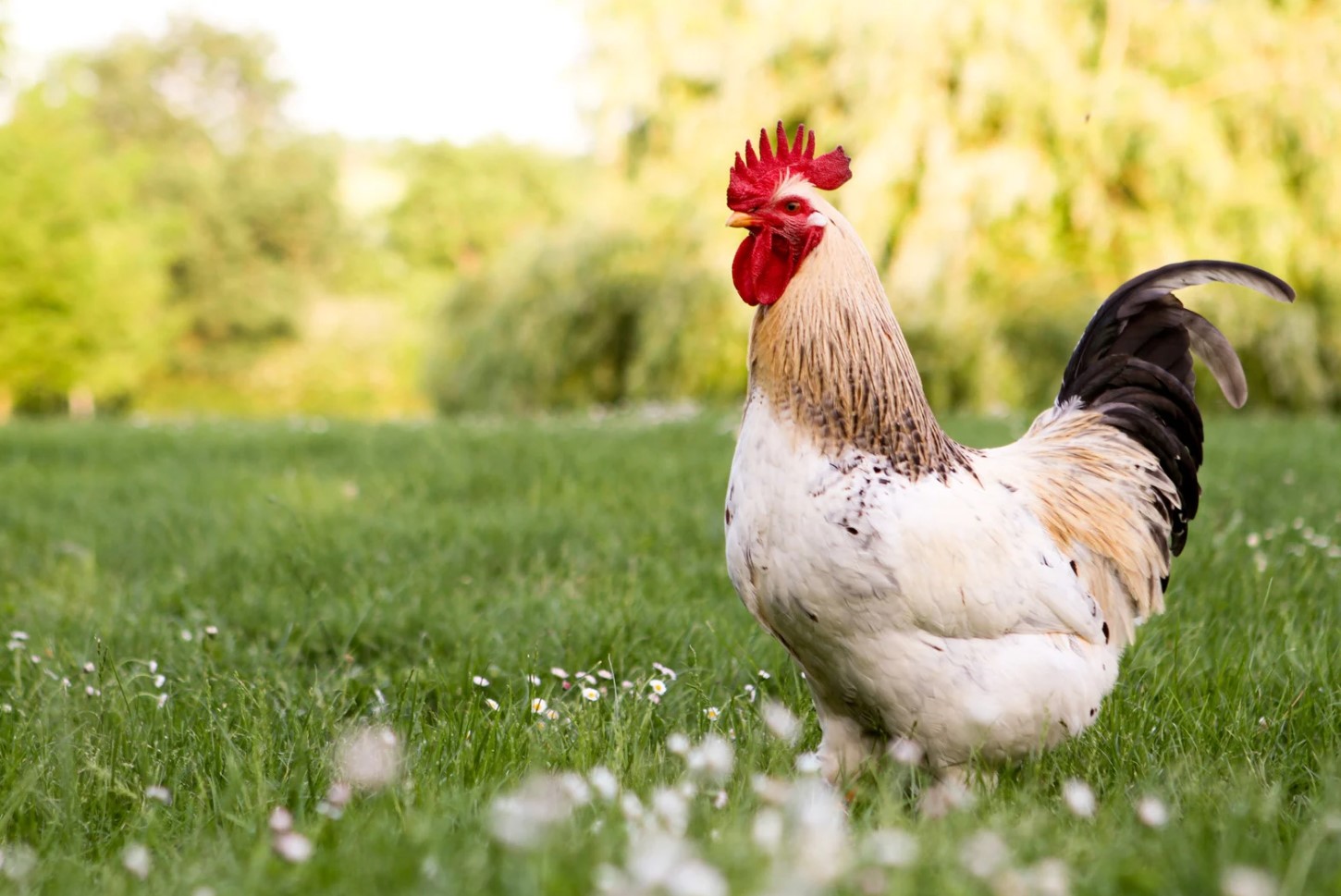
7. Reproduction Of Roosters – Mating And Hatching
Roosters play an important role in the reproductive process of chickens. They are responsible for fertilizing the eggs that are laid by hens which will eventually hatch into chicks. The mating process of roosters involves a series of rituals and behaviors that are crucial for successful fertilization.
During the mating process, the rooster will typically approach the hen in a display of dominance, puffing up its chest feathers and circling around the hen. The rooster will then mount the hen, positioning itself on top and using its tail feathers for balance. The mating process only takes a few seconds to complete and is repeated several times throughout the day during the period when the hen is fertile.
After the eggs have been fertilized, the hen will begin the process of incubation. This involves sitting on the eggs to keep them warm and regulate their temperature until they hatch. Hatching typically occurs after 21 days of incubation, and the newly hatched chicks will emerge from their shells with the help of an egg tooth on their beaks.
- Roosters play an important role in the reproductive process of chickens.
- The mating process of roosters involves a series of rituals and behaviors that are crucial for successful fertilization.
- The incubation period for chicken eggs is typically 21 days.
| Rooster Mating and Hatching | |
|---|---|
| Process: | Description: |
| Mating | The rooster approaches the hen and performs a series of behaviors before mounting the hen to fertilize the eggs. |
| Incubation | The hen sits on the fertilized eggs to keep them warm and regulate their temperature until they hatch after 21 days. |
| Hatching | The newly hatched chicks emerge from their shells with the help of an egg tooth on their beaks. |
8. Health And Diseases Of Roosters – Prevention And Treatment
Roosters are amazing creatures that play a key role in many households. They are well-known for their loud cock-a-doodle-doo and their stunning feathers. However, just like any other animal, roosters can also fall sick or get infected with diseases, which could compromise their health and wellbeing. Therefore, it’s essential for rooster owners or poultry farmers to be knowledgeable on the health and diseases of roosters so that they can take appropriate measures to prevent, identify and treat various ailments effectively.
-
- Prevention of Diseases
Prevention is always better than cure, and the same applies to roosters. By keeping your roosters in a clean and hygienic environment, you can prevent many diseases. Sanitizing the coop, providing clean water and food, and separating sick birds from the healthy ones are some of the crucial steps in preventing any contagious illnesses. Also, vaccination is a vital measure for preventing specific diseases in roosters. Vaccinations for Newcastle, Marek’s disease, and infectious bronchitis are commonly recommended.
-
- Common Diseases and Treatments
Roosters are susceptible to a variety of diseases, ranging from fungal infections, bacterial infections, viral infections, and parasites. Common diseases that affect roosters include bumblefoot, coccidiosis, lice, mites, and respiratory infections such as bronchitis. The treatment of any disease depends on the diagnosis of the underlying cause. Therefore, it is essential to observe your roosters closely and seek veterinary help if you notice any unusual behavior, symptoms, or if your rooster stops crowing. Treatment may involve administering medication such as antibiotics, anti-fungal, or anti-parasitic drugs.
-
- Health and Nutrition
Just like humans, roosters also require a balanced and nutritious diet to maintain their health and prevent disease. A healthy diet should contain a mix of carbohydrates, vitamins, minerals, and proteins. Feeding your roosters with high-quality chicken feeds, supplementing their diets with fresh vegetables, fruits, and giving them clean water are some of the ways to support their health. Additionally, providing them with enough space to move around, fresh air, sunlight, and clean bedding will also help reduce the risk of illnesses.
Overall, rooster owners should be proactive when it comes to the health of their birds. Prevention is crucial, but early detection and treatment are equally important to ensure the well-being of your feathered friends. By following proper health and hygiene practices, providing a nutritious diet, and seeking professional help when necessary, you can help your roosters lead healthy and happy lives.
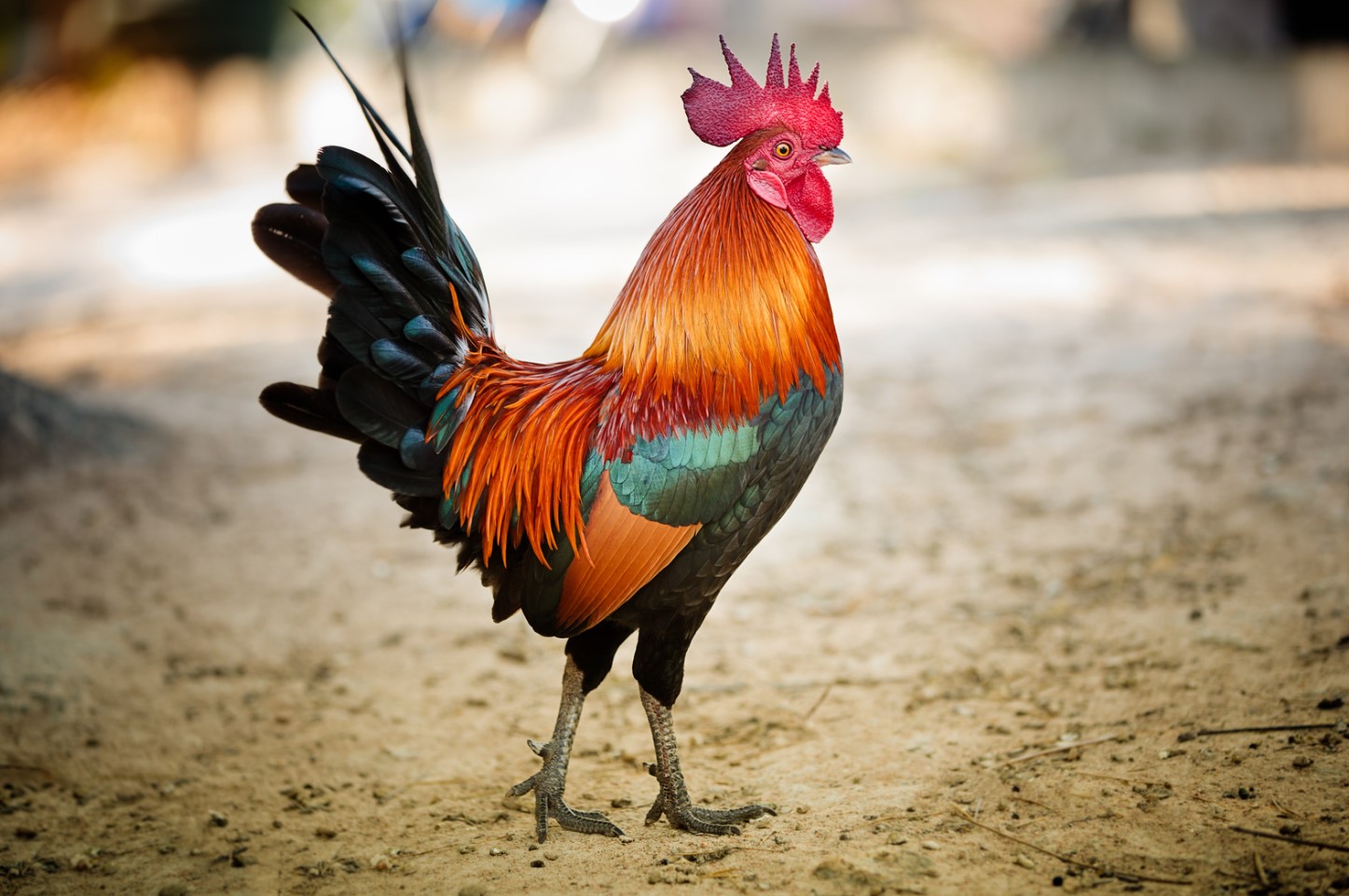
9. Roosters İn Culture And Symbolism – Mythology And Folklore
In many cultures, the rooster is a symbol of courage, strength, and good fortune. Mythology and folklore are filled with stories featuring the proud and majestic bird. For example, in Greek mythology, the rooster was associated with the god of light, healing, and prophecy, Asclepius.
In Hindu mythology, the god of war is said to ride a chariot pulled by seven roosters. In Chinese culture, the rooster is one of the 12 zodiac animals and is associated with fidelity, punctuality, and intelligence. The ancient Romans also kept the rooster as a symbol of their power and courage.
- Did you know that in some cultures, cockfighting is considered a sport and can be traced back to ancient times?
- In the Philippines, the rooster is a symbol of courage and is a popular pastime for farmers.
One popular story in Western culture is the tale of the rooster who crowed after Peter denied Jesus three times, symbolizing redemption and repentance. Another popular legend involves the French town of Bressuire, where during a siege in the Middle Ages, a rooster crowed to signal the end of the battle, and the town was victorious. Today, the town celebrates this battle every year with a rooster festival.
| Country | Rooster Symbolism |
|---|---|
| Greece | Light, healing, prophecy |
| Hinduism | War, strength, courage |
| China | Fidelity, punctuality, intelligence |
| Philippines | Courage, pastime |
| France | Victory, courage |
The rooster is also a popular subject in art and design, with its vivid colors and striking appearance. It is often featured in paintings, sculptures, and other forms of artwork. Many people also choose to incorporate rooster decor into their homes or gardens as a way to honor the bird’s cultural significance.
Despite its prominence in mythology and folklore, the rooster faces threats in the modern world, including loss of habitat and over-harvesting for food and medicine. Conservation efforts are needed to protect this iconic bird and ensure its continued presence for generations to come.
10. Roosters İn Agriculture And Industry – Poultry And Cockfighting
Roosters have been a significant part of agriculture and industry for centuries. From providing a source of protein through poultry farming to being bred for cockfighting, roosters have played a crucial role in these fields.
In the early days, roosters were primarily bred for meat and egg production. This soon transformed into commercial poultry farming, where roosters are raised in large numbers for their eggs and meat. The poultry industry has brought a huge commercial value to the economy, providing affordable and nourishing food options for consumers worldwide.
- Poultry farming: Poultry farming has been an essential part of agriculture for decades. Roosters, as well as hens, are raised for meat, eggs, and sometimes even their feathers. Poultry farming has grown tremendously over the years, and technological advancements have made it easier and more profitable to raise chickens.
- Cockfighting: Although rooster fighting is banned in many countries, it still remains a popular sport in some parts of the world. Roosters are raised, trained, and often injected with steroids to enhance their performance during fights. While it is a controversial practice and is illegal in many countries, cockfighting has been a source of income for some individuals and has resulted in the creation of a unique breed of roosters specifically for this purpose.
While the agricultural and industrial uses of roosters have provided numerous benefits, there are also issues that have arisen. In poultry farming, animal welfare concerns have been brought to light as some commercial operations prioritize profits over the well-being of the animals. Similarly, cockfighting is widely criticized for the violence and cruelty towards the roosters involved.
Ultimately, roosters have played a significant role in agriculture and industry, but it is essential to consider the ethical and legal implications of the practices that utilize these animals.
| Pros | Cons |
|---|---|
| Provides a source of food and income | Animal welfare concerns in some commercial operations |
| Cockfighting has cultural significance in some communities | Cockfighting is illegal in many countries and widely criticized for animal cruelty |
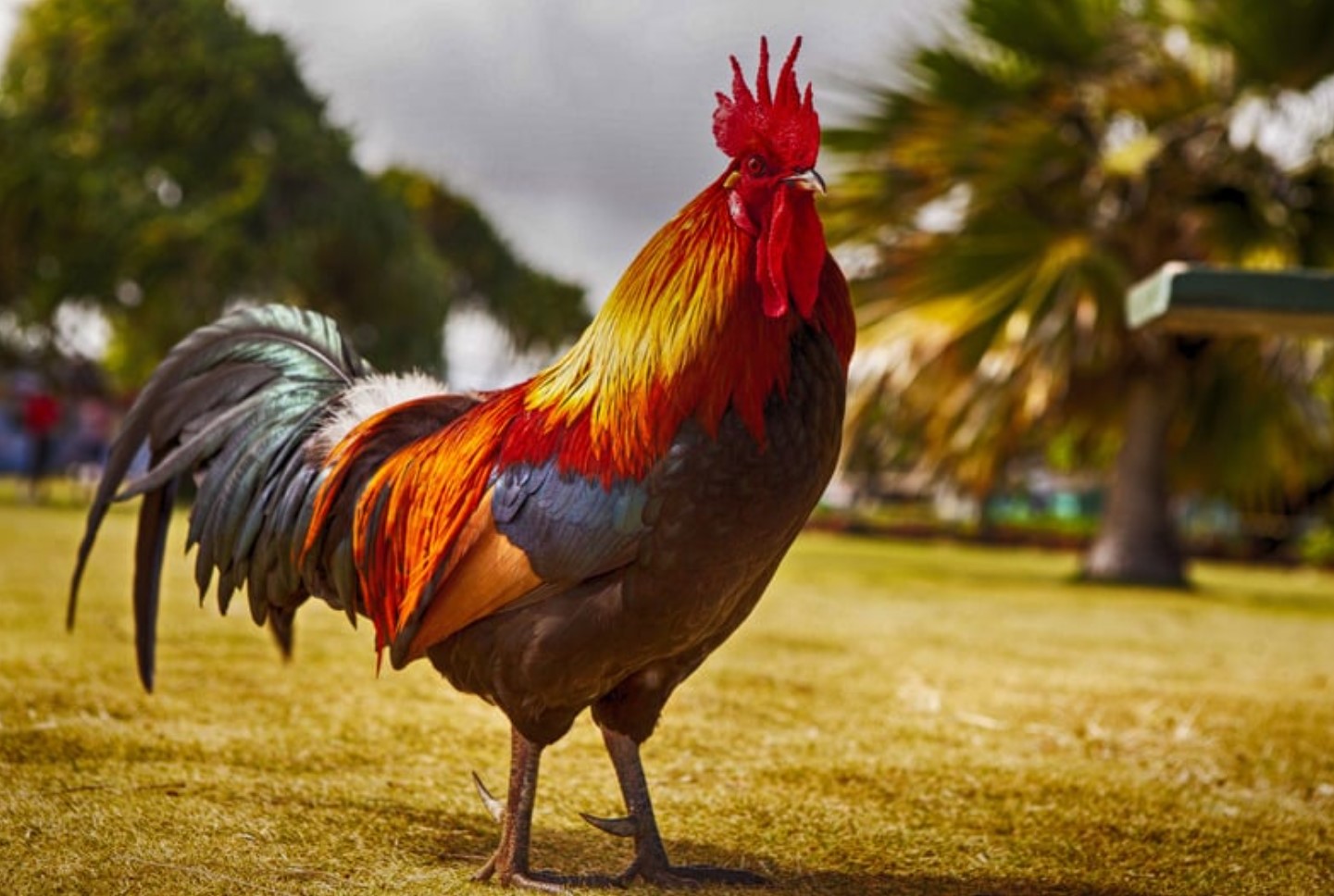
11. Roosters As Pets And Hobby – Showing And Breeding
Roosters are not just meant to be raised in farms for their meat or eggs. They can also be raised as pets and even participate in various exhibitions and competitions. In fact, raising roosters as pets and hobby is becoming more and more popular among animal enthusiasts.
One way to enjoy roosters as a hobby is by showing them off in different events, such as poultry shows, fairs, and competitions. In these events, roosters are judged based on their physical appearance, breed standards, and overall health. These events provide a great opportunity for rooster owners to showcase their birds, to learn from other enthusiasts, and to build a community with fellow rooster lovers.
Breeding roosters is also a popular hobby, but it requires knowledge, patience, and dedication. The breeding process involves selecting suitable roosters and hens, ensuring their health and well-being, monitoring the egg-laying and hatching process, and caring for the newborn chicks. Breeding roosters requires proper planning, time management, and a good understanding of the genetics of the chosen breeds.
- One important thing to consider before raising roosters as pets and hobby is the legality of owning them in your area. Some cities and towns have regulations on keeping poultry in residential areas.
- Another thing to consider is the space you have for the roosters to roam and live comfortably. Roosters require enough space to exercise, eat, and rest, and they need a secure area to protect them from predators and harsh weather conditions.
| Pros | Cons |
|---|---|
|
|
Overall, raising roosters as pets and hobby can be a fun and rewarding experience, but it requires careful planning, research, and commitment. Whether you choose to show off your roosters in competitions or to breed them for their unique traits, there are many opportunities to learn, grow, and connect with other enthusiasts in the rooster community.
12. Roosters İn Art And Design – Painting And Sculpture
Roosters have been a popular subject in art throughout history. From cave paintings to modern art installations, these magnificent birds have inspired artists from around the world. Painters and sculptors alike have captured the essence of the rooster in their works, showcasing their beauty, strength, and unique characteristics.
One of the most famous representations of roosters in art is Vincent Van Gogh’s “The Red Rooster”. This painting is known for its bold colors and thick brushstrokes, which bring the rooster to life on canvas. Other famous paintings featuring roosters include “Portrait of a White Leghorn Rooster” by John James Audubon and “The Rooster” by Pablo Picasso.
- Beyond painting, roosters have also been popular subjects in sculpture. Metal sculptures of roosters can be found in gardens and parks around the world, often as a symbol of good luck and prosperity.
- One of the most famous rooster sculptures is the “Monumento Al Gallo” in Guatemala City. This massive bronze statue stands over 40 feet tall and weighs over 35 tons.
| Artist | Artwork |
|---|---|
| Frank Stella | “Rooster II” |
| Paul Gauguin | “Rooster and Hen” |
| Henri Matisse | “The White Rooster” |
In addition to traditional forms of art, roosters have also made their way into popular culture and design. From kitchen decor to fashion accessories, rooster motifs can be found in a wide range of products. Some people even choose to keep live roosters as pets, which can provide endless inspiration for artwork and design.
Overall, roosters continue to be a beloved subject of art and design. Their unique features, vibrant colors, and strong personalities make them an endless source of inspiration for artists and designers around the world.
13. Rooster Sounds And Calls – Crowing And Communication
Roosters are known for their distinct sounds and calls, making them a popular subject of fascination for many people. Crowing is the most prominent sound made by roosters and it is said that it is the sign of the start of a new day on the farm. Roosters crow at different times throughout the day and their loud sounds can be heard from a long distance.
Roosters also make other sounds that serve different purposes. They use a series of clucks and squawks to communicate with their flock, alerting them of danger or calling them to food. Hens can differentiate the rooster’s calls and respond to them accordingly, showing their ability to understand and communicate with each other.
- Roosters also use body language when communicating with their flock. They will puff up their chest feathers, fan their tail feathers, and make a low trilling sound to show dominance and establish their territory.
- It is interesting to note that roosters’ sounds and calls vary depending on their breed. Some breeds have a louder and more frequent crow while others have a softer and less frequent crow.
- Roosters have also been used in traditional culture and mythology as symbols of courage, strength, and masculinity. In many cultures, roosters are believed to have the power to ward off evil spirits and bring good fortune to the household.
Overall, it is clear that roosters are highly vocal and communicative creatures with sophisticated ways of expressing themselves. It is fascinating to observe their behavior and the different sounds and calls they make in order to communicate with their flock and establish their dominance in the pecking order.
14. Rooster Behavior And Intelligence – Learning And Memory
Roosters are fascinating creatures that are known for their unique behaviors and intelligence. These birds have been domesticated for thousands of years, and they have developed complex social structures and communication systems that allow them to thrive in different environments. Scientists have studied the behavior and cognition of roosters for decades, and they have discovered many interesting facts about how these birds think, learn and remember.
One of the most remarkable aspects of rooster behavior is their capacity to learn and retain information. Roosters have excellent memory skills, and they can remember a wide range of stimuli, including faces, sounds, and locations. This ability to retain information is essential for their survival in the wild, as it helps them recognize predators, sources of food and water, and potential mates.
Roosters are also highly intelligent animals that exhibit a wide range of cognitive abilities. They have been shown to perform complex tasks such as problem-solving, tool use, and social manipulation. For example, a rooster can devise a strategy to get to a piece of food that is out of reach by using a stick or other object to reach it. Similarly, roosters can use their communication skills to manipulate other birds and protect their territory.
- Roosters have excellent memory skills and can remember faces, sounds, and locations
- Roosters are highly intelligent and can perform complex tasks like problem-solving and tool use
- They can use their communication skills to manipulate other birds and protect their territory
The behavior and intelligence of roosters are shaped by a wide range of factors, including genetics, environmental conditions, and social interactions. For example, roosters that grow up in enriched environments with plenty of opportunities to explore, socialize, and engage in meaningful activities tend to exhibit better cognitive performance and emotional resilience than those that are raised in barren or stressful environments.
As our understanding of rooster behavior and cognition continues to grow, we may discover new ways to improve their welfare and optimize their role in agriculture and industry. By promoting a better understanding and appreciation of these remarkable birds, we can also help protect them from threats such as habitat loss, climate change, and disease outbreaks, and ensure their long-term survival in the wild and in human care.
| Keywords | Definition |
|---|---|
| Rooster | A domesticated bird used for their meat, eggs, and feathers |
| Cognition | The mental process of acquiring knowledge and understanding through thought, experience, and sensory input |
| Environment | The physical, biological, and social factors that surround and influence an individual or population |
15. Future Of Roosters – Threats And Opportunities For Conservation.
Roosters have been an important part of human history, providing food, feathers, and entertainment for centuries. However, the future of roosters is uncertain, with threats from disease, habitat loss, and commercial farming practices. In this blog post, we will explore the threats facing roosters and the opportunities for conservation.
Threats to Roosters: One of the biggest threats facing roosters today is disease. Avian flu, Newcastle disease, and other illnesses can quickly spread through flocks, wiping out entire populations. Another threat is habitat loss, as more and more land is cleared for agriculture and development. Roosters also face danger from commercial farming practices, with many being raised in cramped and unsanitary conditions.
- Disease: Avian flu, Newcastle disease, and other illnesses can quickly spread through flocks, wiping out entire populations.
- Habitat Loss: More and more land is being cleared for agriculture and development, leaving fewer places for roosters to live.
- Commercial Farming: Many roosters are raised in cramped and unsanitary conditions, which can lead to disease and other health problems.
Opportunities for Conservation: Despite these threats, there are many opportunities for conservation efforts to help protect roosters. One important step is to raise awareness about the importance of roosters in our environment and culture. By educating people about the vital role that roosters play, we can encourage more people to get involved in conservation efforts. Another important strategy is to work on habitat conservation, such as protecting natural habitats and restoring degraded areas. This can help provide safe and healthy environments for roosters to thrive.
| Opportunities for Conservation | Actions to Take |
|---|---|
| Raising Awareness | Education campaigns, public speaking events, social media outreach |
| Habitat Conservation | Land conservation efforts, habitat restoration projects |
| Breeding Programs | Programs to promote genetic diversity and ensure healthy populations |
In conclusion, roosters are facing serious threats in the modern world, but there are also many opportunities for conservation efforts to help protect these important animals. By raising awareness, working on habitat conservation, and promoting genetic diversity through breeding programs, we can ensure a bright future for roosters and the many benefits they provide for humans and the environment.
